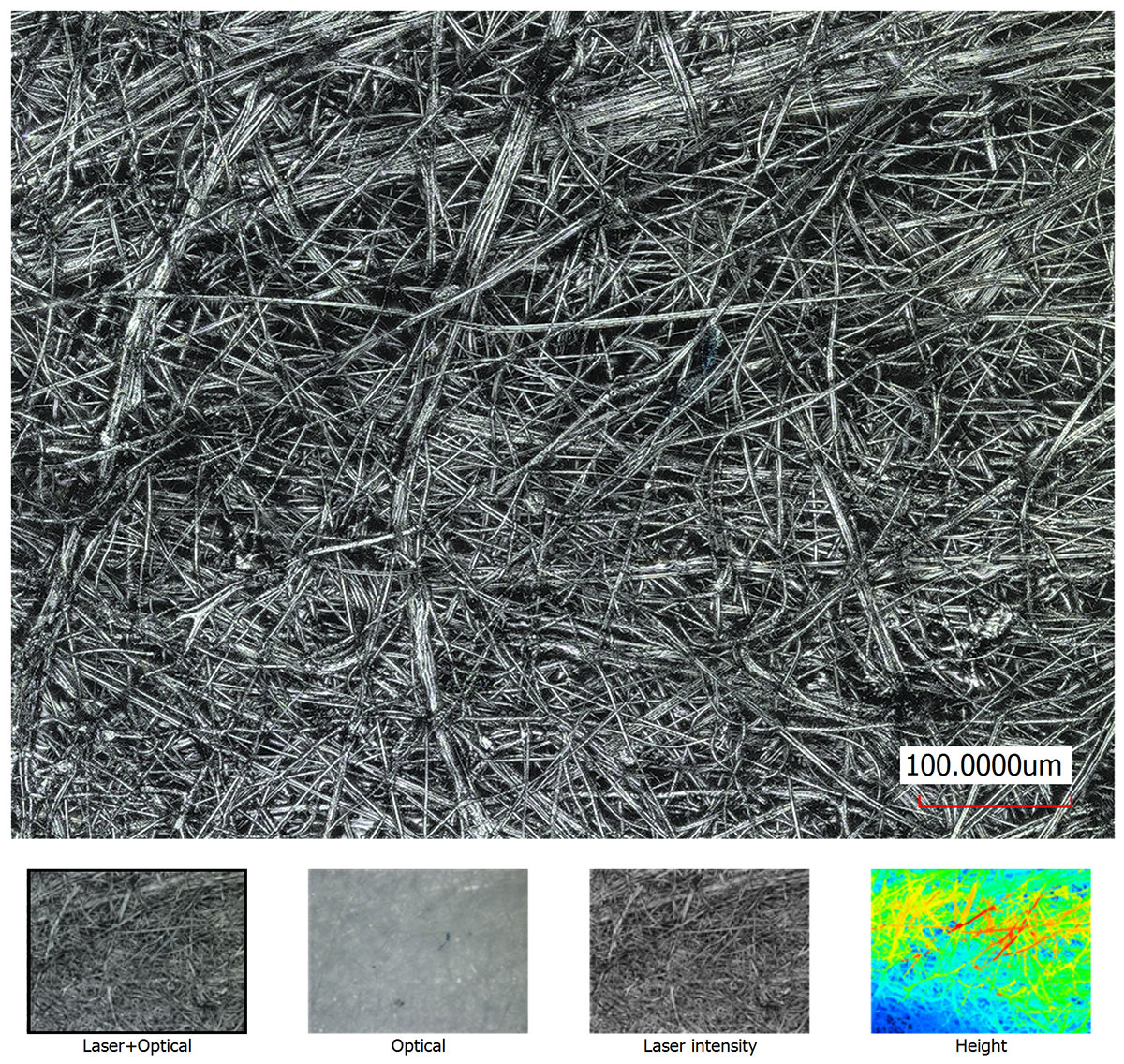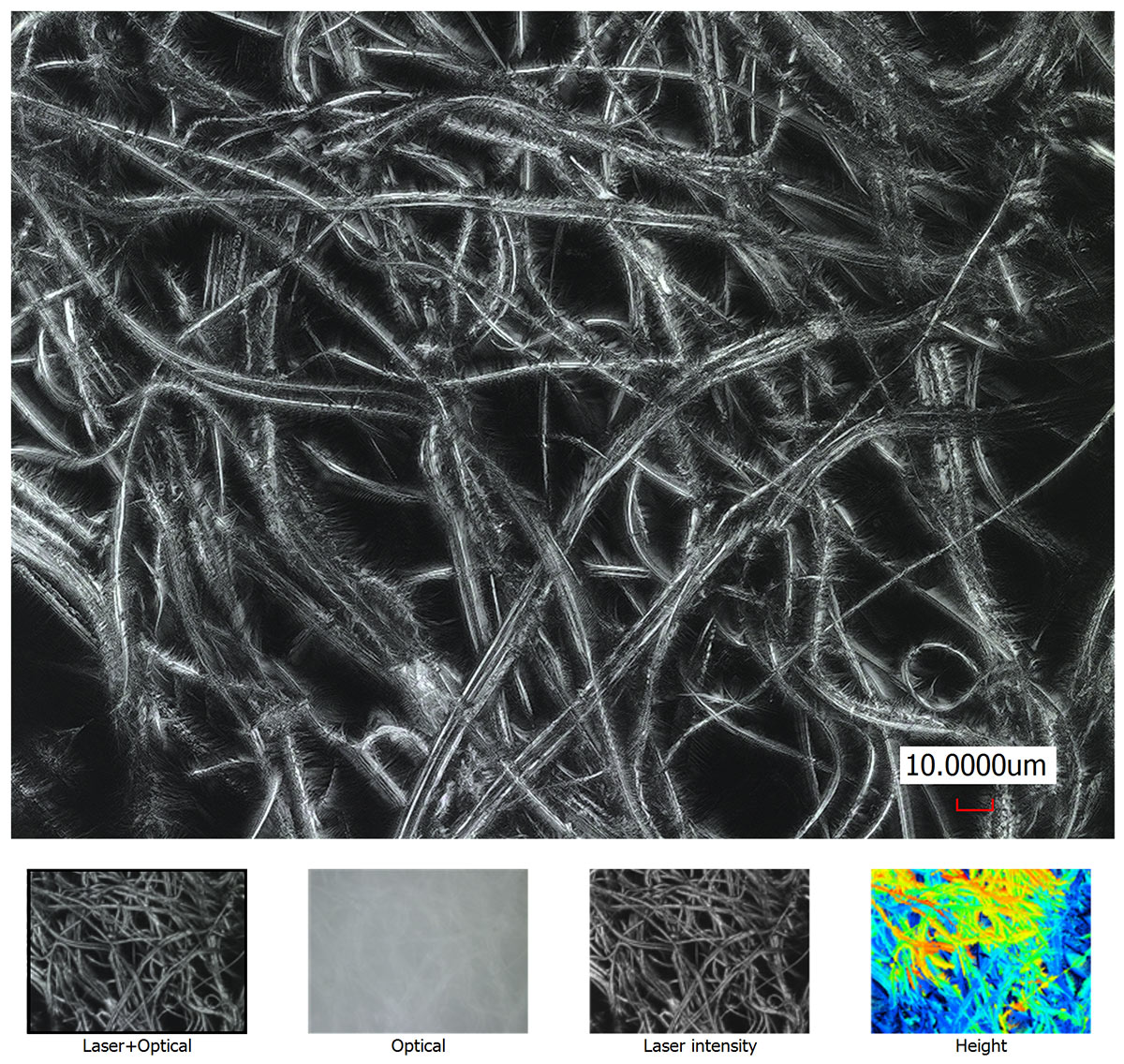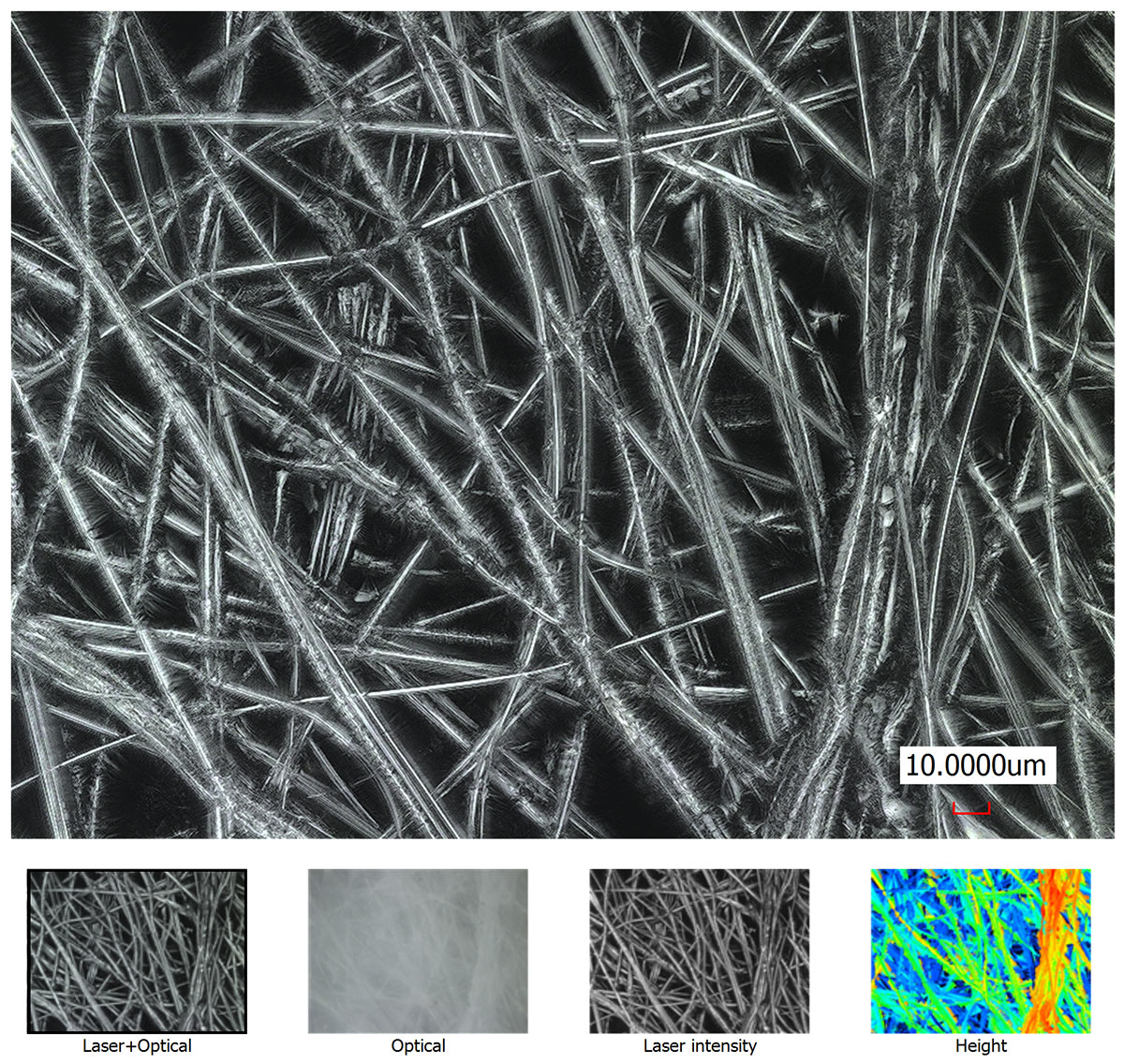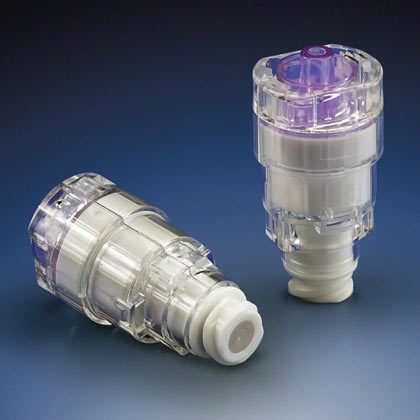We Put the 4 Most Common Facemasks on the Market Under the Microscope
The masks available on the market range greatly in material types, classification, and filtration, so we decided it would be interesting to see the most common face masks used under the microscope. The team at Q-PLUS Labs wanted people to easily visualize just what 0.1 micron (0.000004 inches), looks like. Note: The Coronavirus ranges from 0.06 microns to 0.14 microns in size (CDC).
We decided to take a much closer look at the four most common masks that people use every day – Cloth, Disposable/Medial, KN95, and N95.
Scans conducted on a Keyence VK-X2000K – The first image shown in each series of mask types is the outward-facing layer, followed by the second image of the inward-facing layer. For each mask type and side, there is a (50x) at 1000.0000um, (400x) at 100.0000um, and a (1000x) shot at 10.0000um. We have also included a 1.0000um (grid shot) of the Kn95 for an even closer look!
Cloth Masks
Cloth Masks can be made from a variety of fabrics (like cotton) and many types of cloth masks. Loosely woven cloth products are known to provide the lowest level of protection.
(Layer 1) 50X – 1000.0000um
(Layer 1) 400X – 100.0000um

(Layer 1) 1000X – 10.0000um
Medical & Disposable Masks
This is one of the most common masks on the market. Disposable procedure masks are widely available. Also sometimes referred to as surgical masks.
(Outer Layer 1) 50X – 1000.0000um
(Outer Layer 1) 400X – 100.0000um
(Middle Layer 2) 50X – 1000.0000um
(Middle Layer 2) 400X – 100.0000um
(Middle Layer 2) 1000X – 10.0000um
(Inner Layer 3) 50X – 1000.0000um

(Inner Layer 3) 400X – 100.0000um
KN95 Masks
KN95 masks are a type of respirator that meets certain international standards. When properly made, KN95 masks may offer more protection than a medical mask because they filter out both large and small particles.
(Outer Layer 1) 50X – 1000.0000um
(Outer Layer 1) 400X – 100.0000um
(Middle Layer 2) 50X – 1000.0000um
(Middle Layer 2) 400X – 100.0000um

(Middle Layer 2) 1000X – 10.0000um

(Inner Layer 2) 1000X – (1.0000um Grid)
(Inner Layer 2) Approx. 5000X – (1.0000um Grid Close-up)
The Coronavirus would be approx. 1/10th the size of the squares of the grid shown in image above!
(Middle Layer 3) 400X – 100.0000um

(Middle Layer 4) 400X – 100.0000um

(Middle Layer 4) 1000X – 1000.0000um

(Inner Layer 5) 400X – 100.0000um

N95 Masks
An N95 mask is a type of respirator that meets U.S. quality standards. An N95 offers the highest level of protection.
(Outer Layer 1) 50X – 1000.0000um
(Outer Layer 1) 400X – 100.0000um

(Inner Layer 2) 50X – 1000.0000um
(Inner Layer 2) 400X – 100.0000um

(Inner Layer2) 1000X – 10.0000um
(Inner Layer 3) 400X – 100.0000um

Mask Types – How do Filters Collect Particles?
Masks (cloth & disposable) and Respirators (N95, KN95) can provide different levels of protection depending on the type of mask and how they are used. Correctly constructed N95, KN95, and KF94 respirators are made from materials with an electrostatic charge, which pulls these particles towards the fibers; this is the key factor in the effectiveness of their use. Medical/surgical versions of disposable masks may also be electrostatically charged to offer greater protection for short periods.
These capture, or filtration, mechanisms are described as follows:

Figure 1: Filtration mechanisms
Inertial impaction: With this mechanism, particles having too much inertia due to size or mass cannot follow the airstream as they divert around a filter fiber. This mechanism is responsible for collecting larger particles.
Interception: As particles pass close to a filter fiber, they may intercept the fiber. Again, this mechanism is responsible for collecting larger particles.
Diffusion: Small particles are constantly bombarded by air molecules, which causes them to deviate from the airstream and come into contact with a filter fiber. This mechanism is responsible for collecting smaller particles.
Electrostatic attraction: Oppositely charged particles are attracted to a charged fiber. This collection mechanism does not favor a certain particle size.
In all cases, once a particle comes in contact with a filter fiber, it is removed from the airstream and held by molecular attractive forces. It is difficult for such particles to be removed once they are collected. There is a particle size at which none of the “mechanical” collection mechanisms (interception, impaction, or diffusion) is particularly effective. This “most penetrating particle size” (MPPS) marks the best point at which to measure filter performance. If the filter demonstrates a high level of performance at the MPPS, then particles both smaller AND larger will be collected with even higher performance.
This is perhaps the most misunderstood aspect of filter performance and bears repeating. Filters do NOT act as sieves. One of the best tests of a filter’s performance involves measuring particle collection at its most penetrating particle size, which ensures better performance for larger and smaller particles. Further, the filter’s collection efficiency is a function of the size of the particles and is not dependent on whether they are bioaerosols or inert particles.
The Relative Size of Particles
Above we see the size of a coronavirus compared to other particles. Note that the coronavirus can exist in respiratory particles that are many times larger than the virus itself.
Hopefully, you now have a better sense of how big the virus is relative to the weave of fibers in the various layers of each mask.




































Leave A Comment
You must be logged in to post a comment.